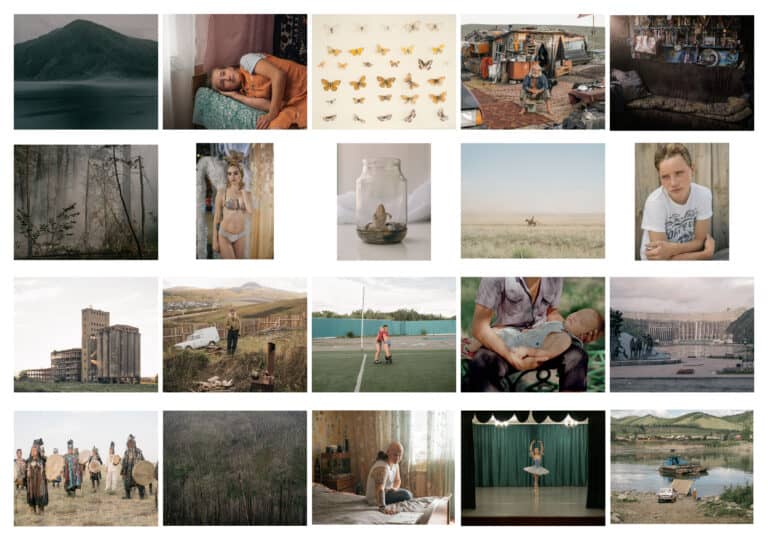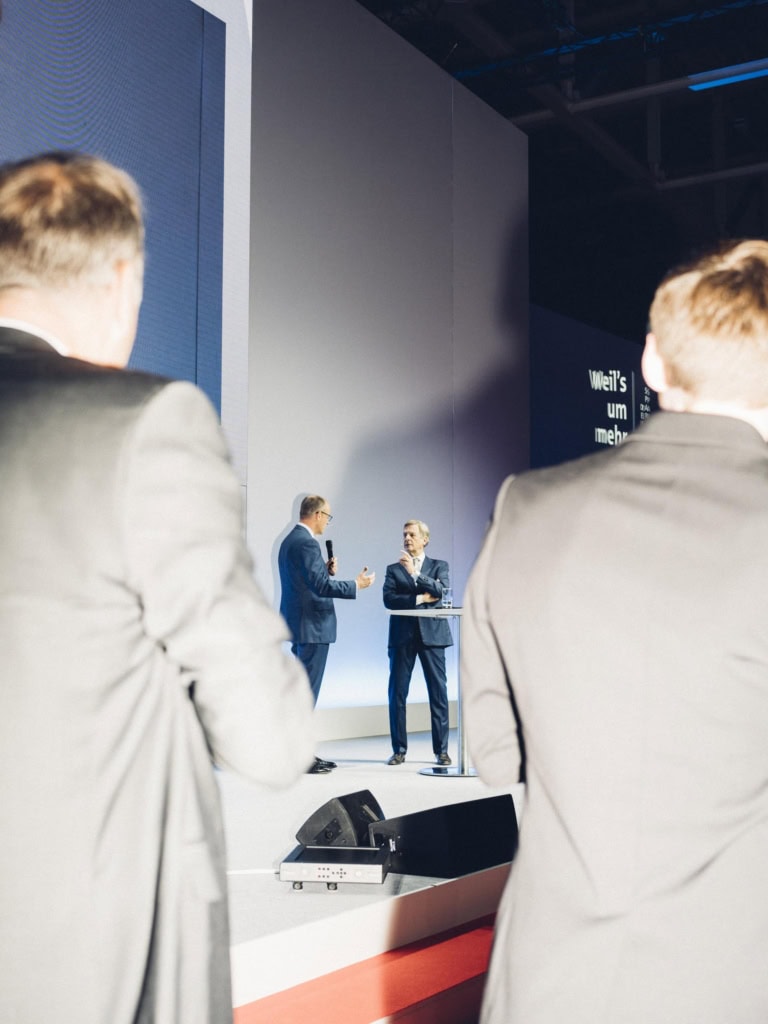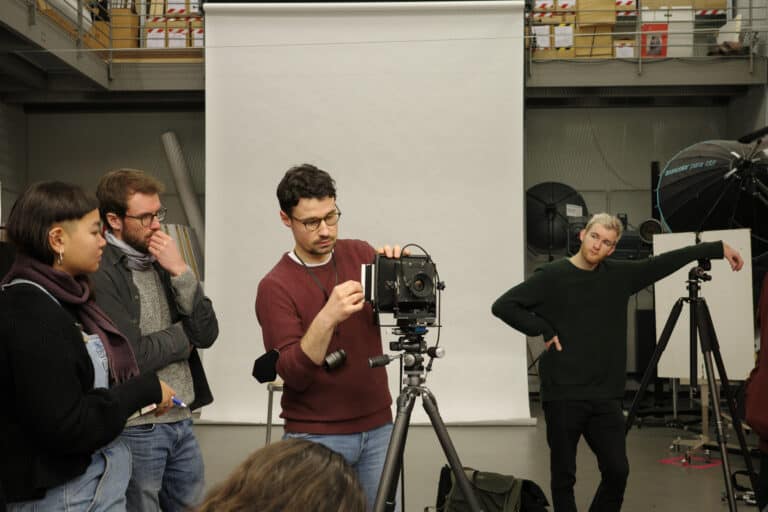How to create a photo series – ideas, themes and examples.
A well-crafted photo series can be powerful and emotionally moving. In this article you will find valuable tips from photography professors.
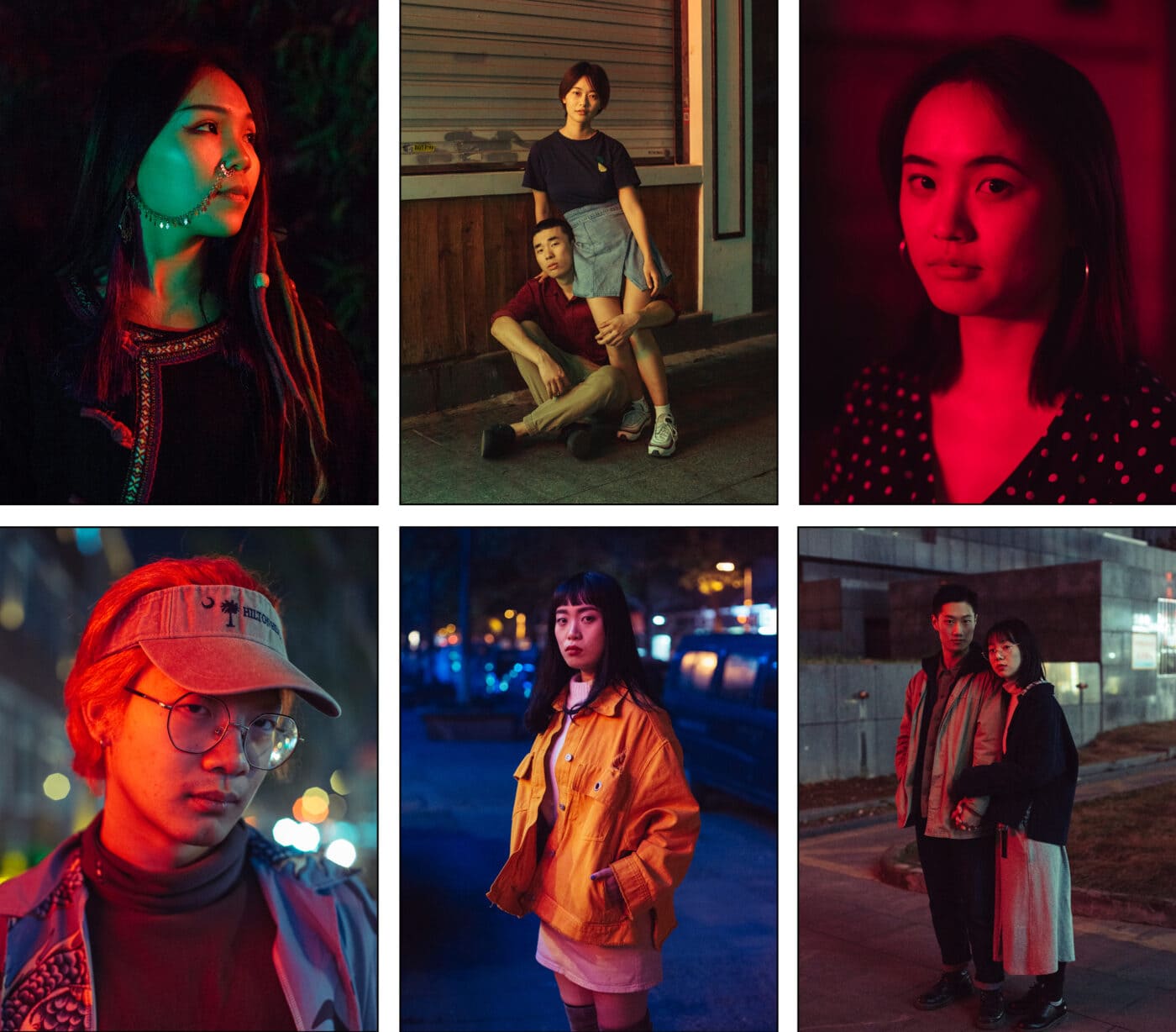 Photos: Andy Happel
Photos: Andy Happel
Du suchst nach Ideen für eine Fotostory? Jedes Foto wirkt immer stärker, wenn es in ein größeres Projekt eingebettet ist. Deshalb ergibt es Sinn, fotografisch nicht nur in Einzelbildern zu denken. Du kannst stattdessen auch an einer ganzen Fotoserie arbeiten: Mit einer fesselnden Fotoserie kannst du Menschen berühren. Sie kann kraftvoll und emotional bewegend sein. Außerdem kann sie eine ganze Geschichte durch eine visuelle Sequenz erzählen und dabei komplizierte Themen verständlich machen. Spannende Fotoserien findest du in den unterschiedlichen Bereichen – in Zeitungen und Magazinen, aber auch in der PR und sogar in der Wissenschaft.
Wenn du an einem Fotoprojekt arbeiten möchtest, erfordert das sorgfältige Planung, Kreativität und eine solide Ausführung. In diesem Artikel geben dir Professor*innen des Studiengangs Visual Journalism and Documentary Photography kreative Ratschläge für eine sinnvolle Herangehensweise. Egal, ob du eine Serie für den Kunstunterricht fotografieren musst, gerade an deiner Bewerbungsmappe arbeitest oder für die Schülerzeitung recherchierst: In diesem Beitrag findest du wertvolle Tipps und Tricks für deine Fotostory!
Content
1. finding a topic. What actually makes a good story? Tips for preliminary research and finding photo ideas.
2. taking photos. With the camera on site – and now? Dealing with light and shadow, color and how to avoid tunnel vision.
3. image selection and image editing. Where to put all the photos? Recommendations for editing and manipulating your photo series.
4. conclusion: The implementation from the idea to the finished photo project – here you will find all steps summarized once again.
1. finding a subject for a photo series
Du solltest zunächst Ideen sammeln. Vielleicht findest du ein Thema, das dich persönlich anspricht oder das einen interessanten Blickwinkel bietet. Es ist nützlich, zu recherchieren, was andere Fotograf*innen in der Vergangenheit gemacht haben; schau dir Fotobücher oder erfolgreiche Foto-Websites an und studiere, wie die Bilder komponiert wurden. Aber es ist auch eine gute Idee, nicht nur auf die Fotografie zu schauen: Kunst, Musik, Film und Literatur können ebenfalls eine gute Inspiration für deine Fotoserie sein. Professor Michael Hauri erinnert sich: «Ich bin während meines Studiums immer in ein Antiquariat gegangen und habe mir alte Zeitschriften und Magazine angeschaut.» Du kannst dabei nach alten Ausgaben von fotografielastigen Medien wie beispielsweise National Geographic, mare oder Life suchen. Sie sind häufig ein guter Ausgangspunkt.
Deepening: What is the difference between photo series, photo essay and photo reportage?
The term “photo series” is often used as a synonym for “photo spread,” including in this post. A photo series in the narrower sense is understood as a series of images that are similar in structure (for example, in terms of perspective, distance, light, colors). Other photographic narrative forms include the photo essay and photo reportage. The difference is that these two forms are more about a change of rhythm and distance. A reportage has a beginning and an end (an example is the photo reportage by Shirin Abedi on this page). With a photo essay, on the other hand, each photo often tells its own story, in line with an overarching theme (as an example, you can find Nanna Heitmann’s photo essay on this page).
Buche bis zu drei kostenlose Termine. Während der Gespräche beantworten wir deine Fragen zum Studium und zu deinem Portfolio.
Auch die Fotostorys der Studierenden des Studiengangs Visual Journalism and Documentary Photography sind ein idealer Ausgangspunkt. Die Studierenden haben zahlreiche preisgekrönte Fotoprojekte erstellt, die einzigartige Momente, Kulturen und Geschichten durch visuelles Storytelling einfangen. Die Projekte wurden unter anderem mit dem World Press Photo Award und dem Leica Oskar Barnack Award ausgezeichnet. Professor Christoph Bangert, der früher als Fotograf für die New York Times auf der ganzen Welt unterwegs war, gibt den Tipp: «Es ist wichtig, ein Thema zu finden, das nicht nur dich selbst interessiert. Themen benötigen eine gewisse gesellschaftliche oder soziale Relevanz.» Wenn du eine Idee hast, kannst du beispielsweise mit deinem Freundeskreis darüber diskutieren. Vielleicht gibt es einen bestimmten Aspekt, der besonders spannend ist?
Häufig ist es aber trotzdem schwierig, ein Thema für ein Fotoprojekt zu finden, das sich auch relevant anfühlt. Dr. Karen Fromm, Professorin und Kunstwissenschaftlerin, denkt dazu: «Um herauszufinden, ob ein Thema gesellschaftliche Relevanz hat, gibt es sicherlich nicht das eine ideale Bewertungsverfahren. Die Relevanz eines Themas kann sich auch je nach Kontext und Zeit verändern. Der Journalismus hat eigene Entscheidungsroutinen zur Bestimmung von Relevanz, die oft auch als Nachrichtenwert bezeichnet wird, entwickelt.» Prof. Karen Fromm hat deshalb eine Checkliste mit Fragen entworfen, die du dir bei der Ideen-Findung für deine Fotoserie selbst stellen kannst.
Checklist: Relevance of a photo series
1. does your topic have significance for the public? For a specific target group? For a larger group of people?
2. do the events or topic you want to tell about have a larger impact, e.g. on a region, many people, etc.?
3. does the topic have a current reference? Does it have a novelty connection?
4. does the topic generate attention for a grievance?
5. does the topic provide orientation knowledge? Does it clarify about a context? Does it convey background?
Furthermore, Prof. Karen Fromm recommends that you always ask yourself the classic W-questions for your topic idea: Who? What? When. Where. Why? How? What for? Basically, however, it is always true for them that you should base the idea for your photo series on facts and data that can be experienced and verified. Be guided by the criteria of accuracy, impartiality and independence! A vivid example of a photo story with social relevance is the work “May I have this dance?“ by Shirin Abedi. For this she accompanied ballet dancers in Iran. The project is important because it’s not just about ballet. Shirin’s photo series tells of the situation of young women who want to develop themselves in a system that despises women.
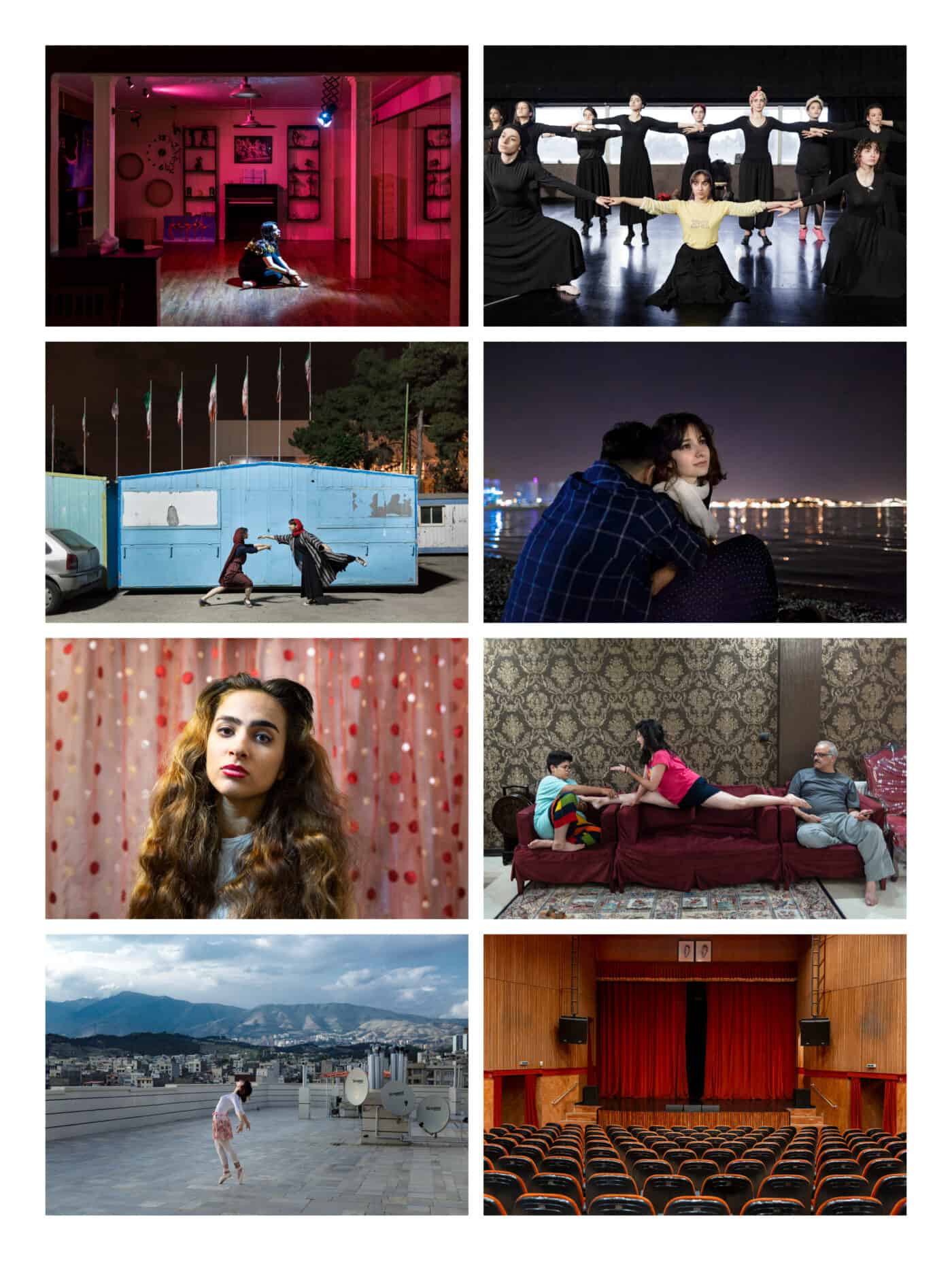 «May I have this dance?» by Shirin Abedi
«May I have this dance?» by Shirin Abedi
It’s important to find a topic that interests more than just yourself. Topics need a certain social or societal relevance.
 Prof. Christoph Bangert
Prof. Christoph Bangert
Of course, such research trips abroad are costly and require a lot of experience. That’s why it’s advisable to find a subject at your location for your photo series. It’s best if you don’t have to go far from home. Christoph Bangert advises: “It is always better to go from the big to the small. It’s best to start by finding just one protagonist.“ For example, Nora Börding accompanied the former forester Gerd Klamer for the Leipziger Volkszeitung. He walked 6000 kilometers through Germany to draw attention to the unfortunate situation of the local forests. Nora Börding tells an impressive story about the fight for nature conservation with this photo series on a small scale.
But a special place can also be an interesting subject. Former student Helena Lea Manhartsberger reports on a Viennese boxing club in her work “Fight Club”. This functions as an intercultural meeting place between hostile people from Afghanistan and Chechnya. This photo series also visualizes a larger theme in a simple frame. Often, however, the biggest challenge is to find not only a topic, but also a protagonist. Christoph Bangert recounts from his own experience: “It always helps to have a large circle of acquaintances. There’s always that friend, a friend who can help you along.“ Otherwise, Christoph Bangert thinks it’s important to explain honestly to people what you’re up to. “Take your responsibility seriously,” he advises. And, “Be nice. That’s the most important thing.“
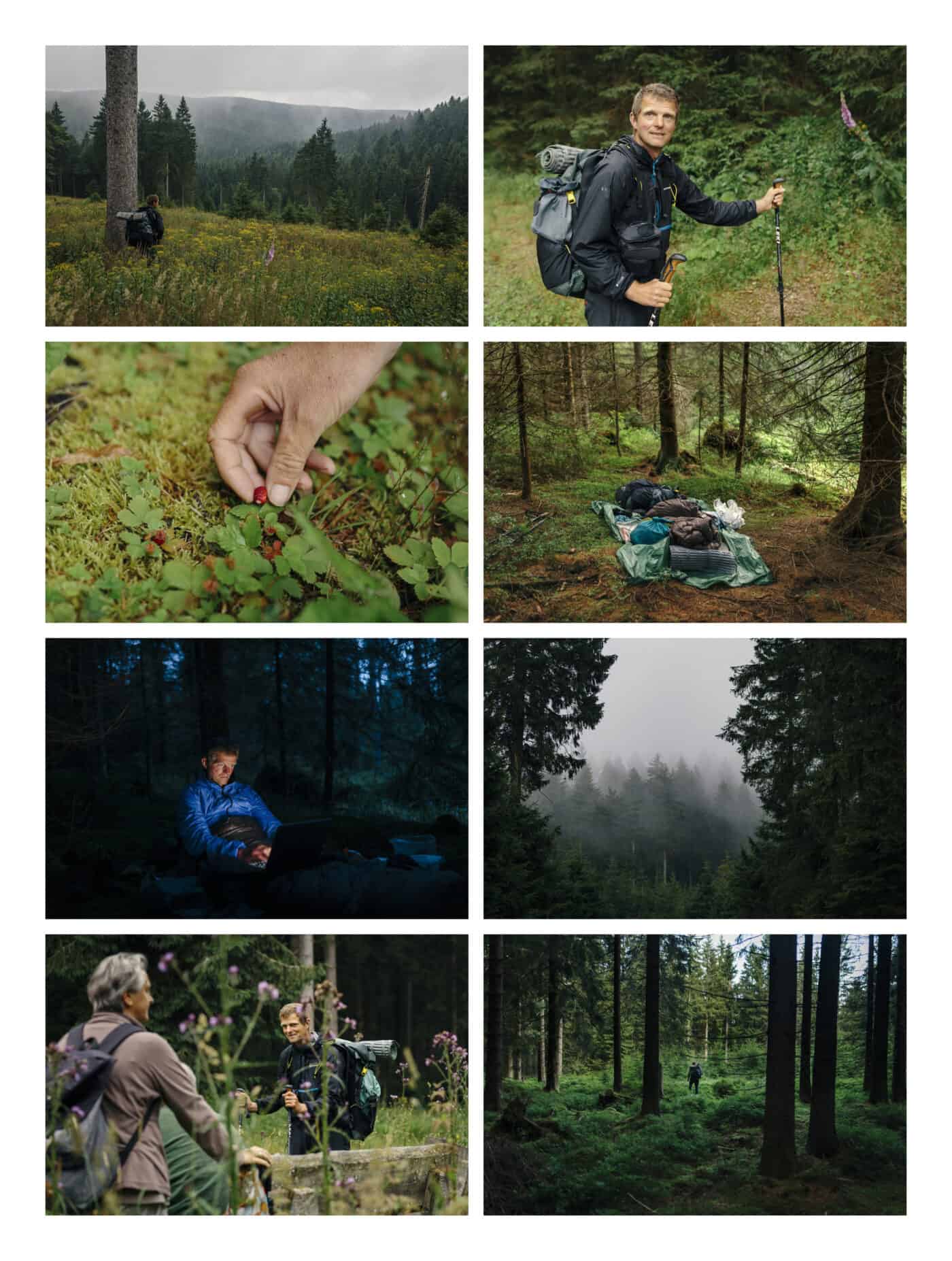 Nora Börding accompanied the former forester Gerd Klamer for the Leipziger Volkszeitung.
Nora Börding accompanied the former forester Gerd Klamer for the Leipziger Volkszeitung.
 The photo project “Fight Club” by Helena Lea Manhartsberger
The photo project “Fight Club” by Helena Lea Manhartsberger
2. photographing a series of photos
The important part when creating a photo series is, of course, taking pictures. For Prof. Karen Fromm, this involves, on the one hand, developing a suitable visual language bracket for a topic. For her, that means, “It’s not just about developing a visual signature that people recognize you with.“ For her, it’s much more essential that the stylistic means fit the respective theme. Karen Fromm points out, “The imagery becomes part of the meaning of your work.“
From experience, dealing with your own photographic equipment on location is usually more difficult than you might expect. In practice, it can quickly happen that you set the wrong settings on your camera in your excitement. If you’re unlucky, you end up using the wrong exposure, for example, or can’t focus. For Professor Michael Trippel, who used to be a staff photographer at Stern, one thing is clear: “It’s very important that you master your camera blindly. You have to know how to change to f/4 on the dial even in the dark.“
It makes similar sense for Professor Trippel to be on site beforehand and look around a bit. He says, “I always look at the light. Is there any incident light or back light outside that I can use somehow? Or is there only subdued light?“ Because light is essential in photography. You can use it to highlight certain aspects of each image. By doing this, you’ll help the viewer focus on what’s important. For example, Agata Szymanska-Medina documented a group of charcoal burners making charcoal the old-fashioned way in the Polish Carpathian Mountains. The skillful use of light gives her picture of the coal furnaces a special drama.
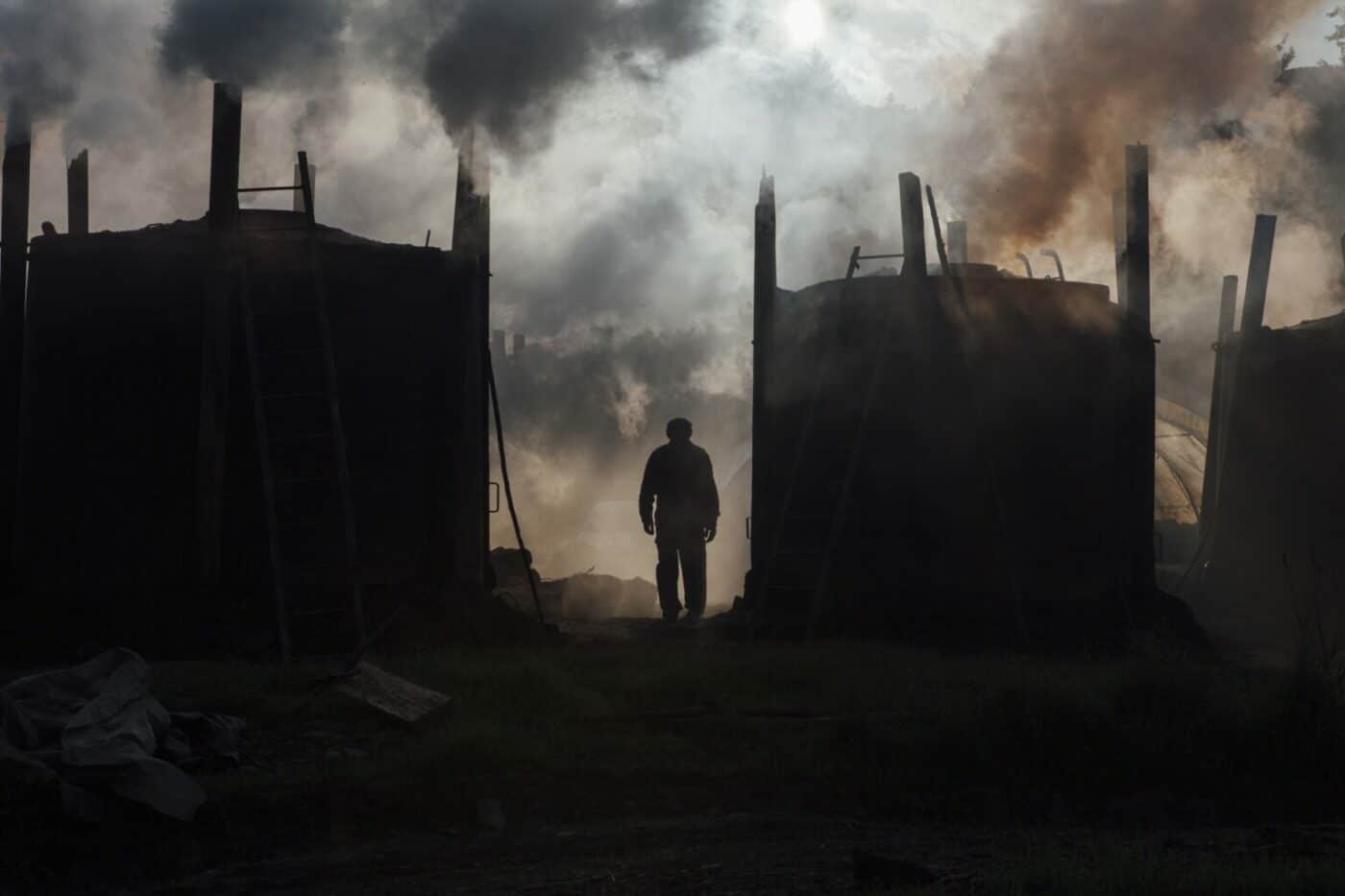 Photography from the series "Lost Paradise" by Agata Szymanska-Medina.
Photography from the series "Lost Paradise" by Agata Szymanska-Medina.
The visual language becomes part of the meaning of your work.
 Prof. Dr. Karen Fromm
Prof. Dr. Karen Fromm
Light often looks best when it doesn’t come directly from above. Faces in particular look more interesting when lit from the side. Therefore, one of the best sources of light are windows. Through them you often have a soft light from the side even during the day. This provides good lighting, especially for portraits. Ceiling light, on the other hand, often looks much more unattractive and boring. Especially when you visit your protagonists at home, you can work well with window light.
A great example is a portrait from François Klein’s “Isaya’s Dream“ series. The image is characterized by a soft, gentle light from the side. For Michael Trippel, from a journalistic point of view, it is perfectly okay to switch off the ceiling lamp indoors if in doubt. He remembers: “I always photographed with available light and without flash if possible – as long as the picture was still sharp. That goes up to a handheld exposure time of 1/30 of a second.“
You can also influence the lighting mood of your images by selecting the time of day. For example, student Jonas Kako photographed a piece on the drying up of the Colorado River. To do this, he frequently traveled through desert areas in the USA. The light there during the day is excessively bright and harsh – for photography this is usually quite unfavorable. Jonas Kako therefore decided to shoot mainly in the morning and evening. Due to the lower position of the sun, the light then comes from a flatter angle and has a warm color temperature. This provides atmospheric lighting. The two photographers Volker Crone and Rafael Heygster traveled through Germany together for DER SPIEGEL magazine in the summer of 2021. In the process, they documented the mood before the federal election. Through the use of flash, her images seem like scenes from a play.
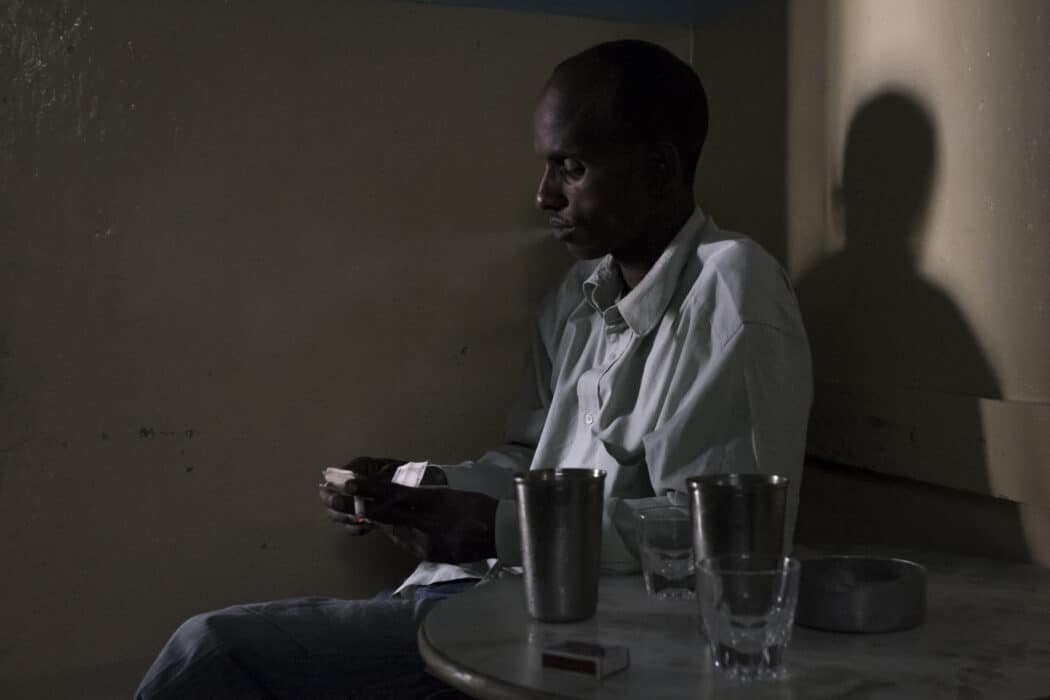 Photography from the series "Isaya's Dream" by François X. Klein.
Photography from the series "Isaya's Dream" by François X. Klein.
It is essential that you control your camera blindly.
 Prof. Michael Trippel
Prof. Michael Trippel
Another important factor in building a photo series is perspective. This is all about where you stand when you take each picture and the angles you choose for the shots. By playing with different perspectives within a series, you can create variety: try not to always shoot everything at eye level. Maybe there is another perspective that is more exciting? By alternating, you keep the viewer engaged, while also being able to highlight different aspects of your work. Photographer Daniel Chatard used sometimes extreme panoramic shots in his work on coal mining in North Rhine-Westphalia. This makes the dimensions of the lignite excavators clear. He shows the people concerned and their respective homes in more detail. An interesting contrast is created.
For Professor Michael Trippel, however, it’s also important not to overdo it when it comes to looking for interesting perspectives: “Sometimes I’ve noticed that I’m just constantly bending my knees or climbing up somewhere. Then it was actually always clear to me that I was just lost.“ In such situations, he advises taking a break and breathing deeply to get out of the tunnel. For example, you can pay attention to what you currently hear or smell. All of this can help you refocus on what’s important. Finally, when creating a photo series, don’t overlook the color palette: Consistent color tones across all images will help tie them together better. Of course, it is often difficult to control the colors of a location in a reportage. Nevertheless, there are numerous photographers who deal with colors in their work in an impressive way.
The student Emile Ducke, for example, is a master at using colors skilfully: In his multi-award-winning reportage “Diagnosis,“ he relied primarily on soft blues and pastel tones. Andy Happel, on the other hand, used very intense color tones in his portrait series on the lives of young people in China. His images are thus reminiscent of the lighting of famous neo-noir films.
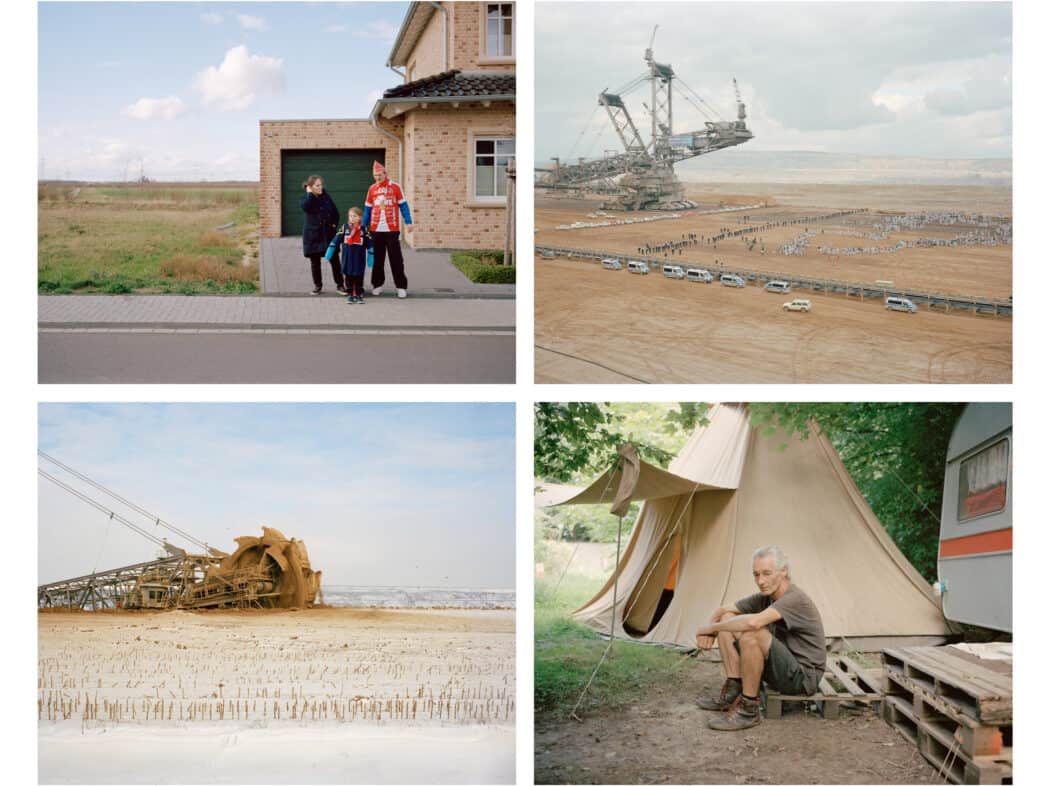 The series “No Man's Land” by Daniel Chatard deals with coal mining in North Rhine-Westphalia
The series “No Man's Land” by Daniel Chatard deals with coal mining in North Rhine-Westphalia
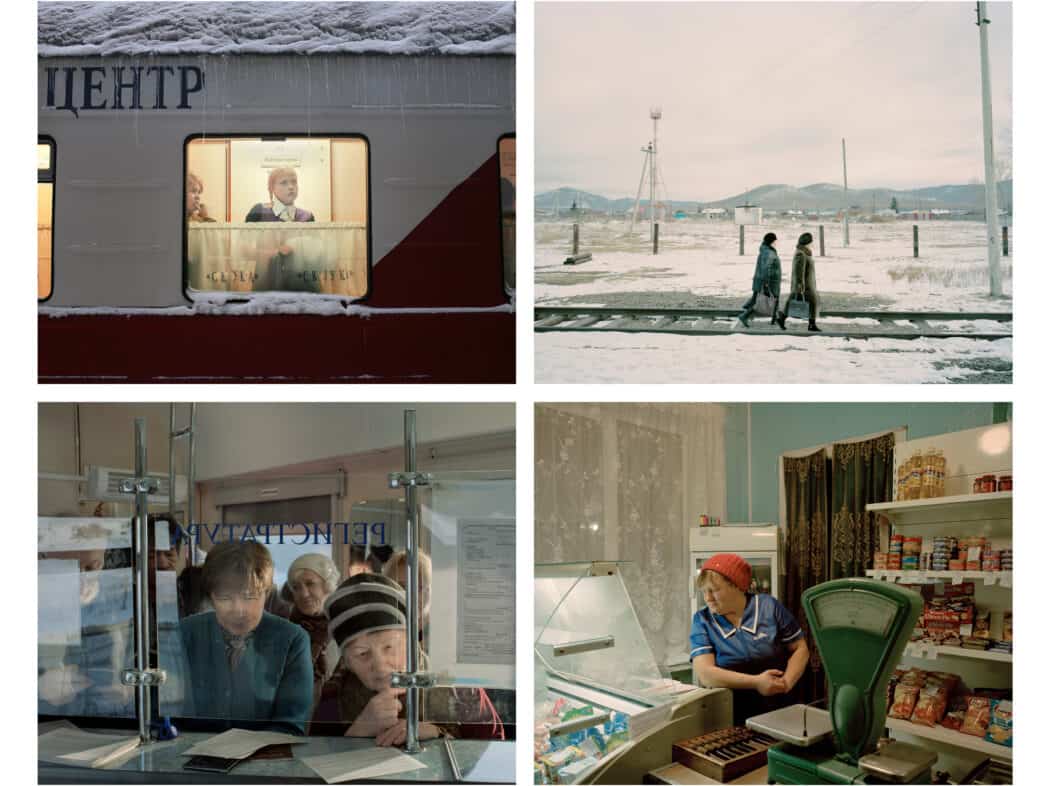 Photos from the series “Diagnosis” by Emile Ducke
Photos from the series “Diagnosis” by Emile Ducke
3. image selection and image editing for a photo series
If after photographing you back home, the next step is to select and edit the images. Professor Lars Bauernschmitt, who was managing director of the VISUM photo agency in Hamburg from 1993 to 2008, advises image editing: “Less is more. Avoid effects. Work with the automatic editing options at the beginning. Trust your image.“ If you’re shooting in RAW, though, be sure to adjust the white balance. This makes the images look more uniform.
Lars Bauernschmitt recommends picking out the ten to twenty best photos afterwards and printing them out: “You can arrange the pictures according to the chronological order in which something happened.“ For Lars Bauernschmitt, this is the easiest way to bring order to your pictures. For example, Patrick Junker’s touching work follows Gerd Kuck, who suffered from an incurable heart muscle inflammation. He had to wait more than ten years for a donor heart. In his final selection of images, Patrick addresses the time before the operation, the operation itself and also the time afterwards.
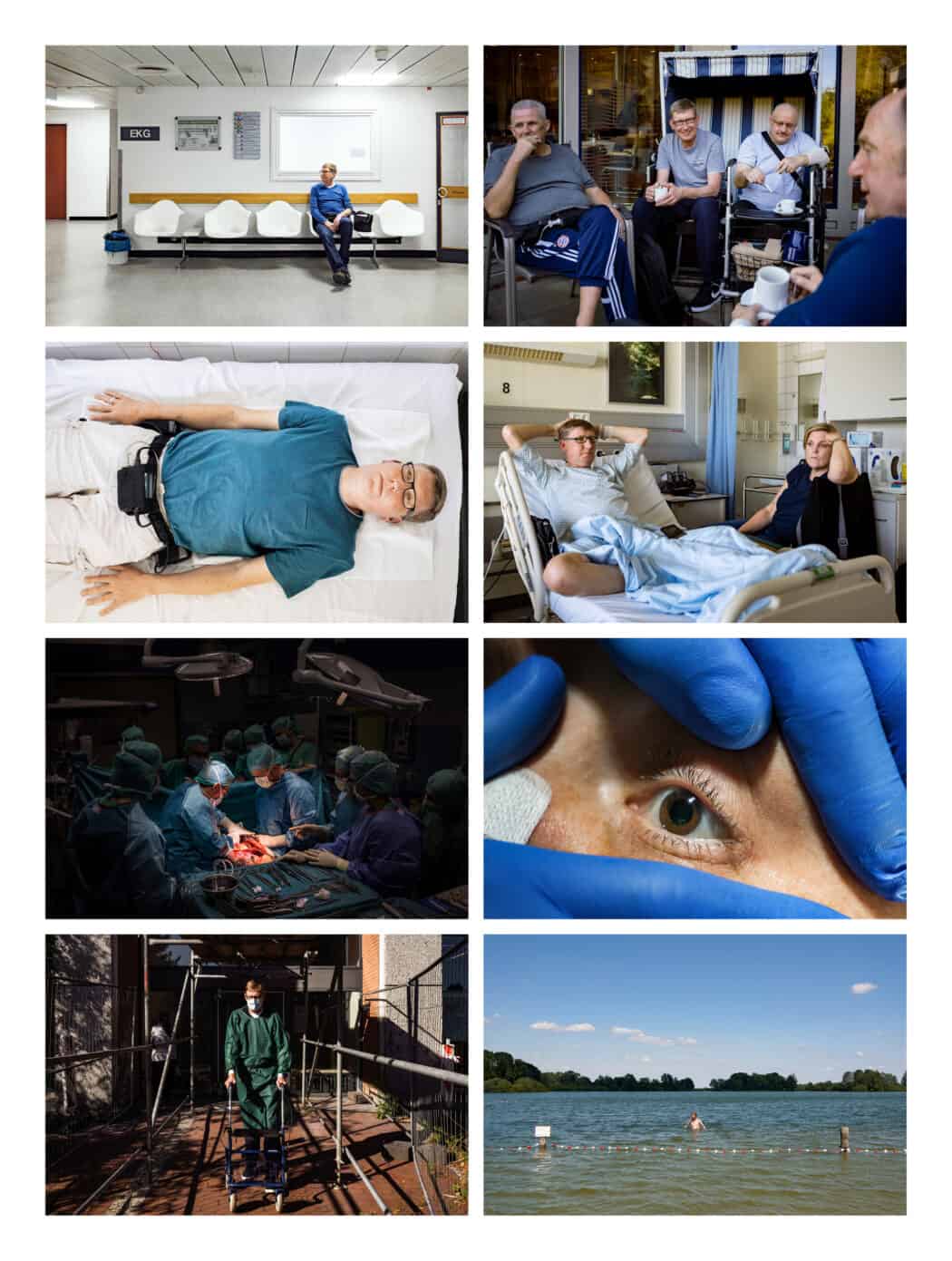 Final selection of the photo project “3804 Days” by Patrick Junker
Final selection of the photo project “3804 Days” by Patrick Junker
You should ask yourself: do my photos really convey information to people who weren’t there?
 Prof. Lars Bauernschmitt
Prof. Lars Bauernschmitt
Aber Lars Bauernschmitt gibt auch zu bedenken: «Du selbst weißt, was du fotografiert hast. Wenn du deine Bilder betrachtest, kommen alle Erinnerungen an das Fotografieren hoch. Du erinnerst dich beim Betrachten deiner Bilder auch an Geräusche oder Gerüche. Du musst dich aber fragen: Transportieren meine Fotos auch wirklich Informationen für Menschen, die nicht dabei waren?» Er gibt deshalb den Tipp, mit deinen Freund*innen über deine Bilder zu sprechen: «Gib Ihnen zunächst möglichst gar keine Erklärungen zu den Bildern, sondern lass sie ihre Eindrücke formulieren. Erkennen sie, was du zeigen wolltest? Oder sehen sie wichtige Details nicht – weil sie im Bild vielleicht nicht gut erkennbar sind?» Er rät, in dem Fall die jeweilige Situation noch einmal anders zu fotografieren – vielleicht aus anderer Perspektive und Distanz.
Abschließend gibt Lars Bauernschmitt den Tipp, deine Geschichte in möglichst wenigen Bildern zu erzählen. Liefert ein Bild wirklich einen neuen Aspekt oder ist es nur eine Wiederholung von etwas, das du schon gezeigt hast? «Du kannst das auch überprüfen, indem du die Bilder in Worten beschreibst – sprich mit dir selbst,» empfiehlt Lars Bauernschmitt.
Wenn du alles fertiggestellt hast, teile es online! Durch das Posten auf Social-Media-Plattformen können andere leicht auf deine Arbeit zugreifen und sich mit ihr auseinandersetzen. Es gibt zahlreiche solcher sozialen Netzwerke wie Fotocommunity, Flickr oder Instagram, die sich explizit mit Fotografie beschäftigen. Du kannst deine Bilder je nach Wunsch einzeln posten oder eine Galerie anlegen. Verwende Hashtags, die sich auf die jeweiligen Themen beziehen, um online besser wahrgenommen zu werden. Damit erhöhst du auch die Chancen auf eine mögliche Zusammenarbeit mit anderen Kreativen aus ähnlichen Genres. Finde Freunde auf diese Weise und tausche dich mit ihnen aus! (Aber sei im Internet natürlich immer vorsichtig.) Auch für professionelle Fotograf*innen ist dieser Austausch wichtig: Sie haben häufig eine Fotocommunity im echten Leben. Das hilft ihnen, wenn sie mal eine Frage zur Technik oder zur Vorbereitung auf eine Reise haben. Das kann auch eine vielversprechende Möglichkeit sein, neue Projekt-Ideen zu finden.
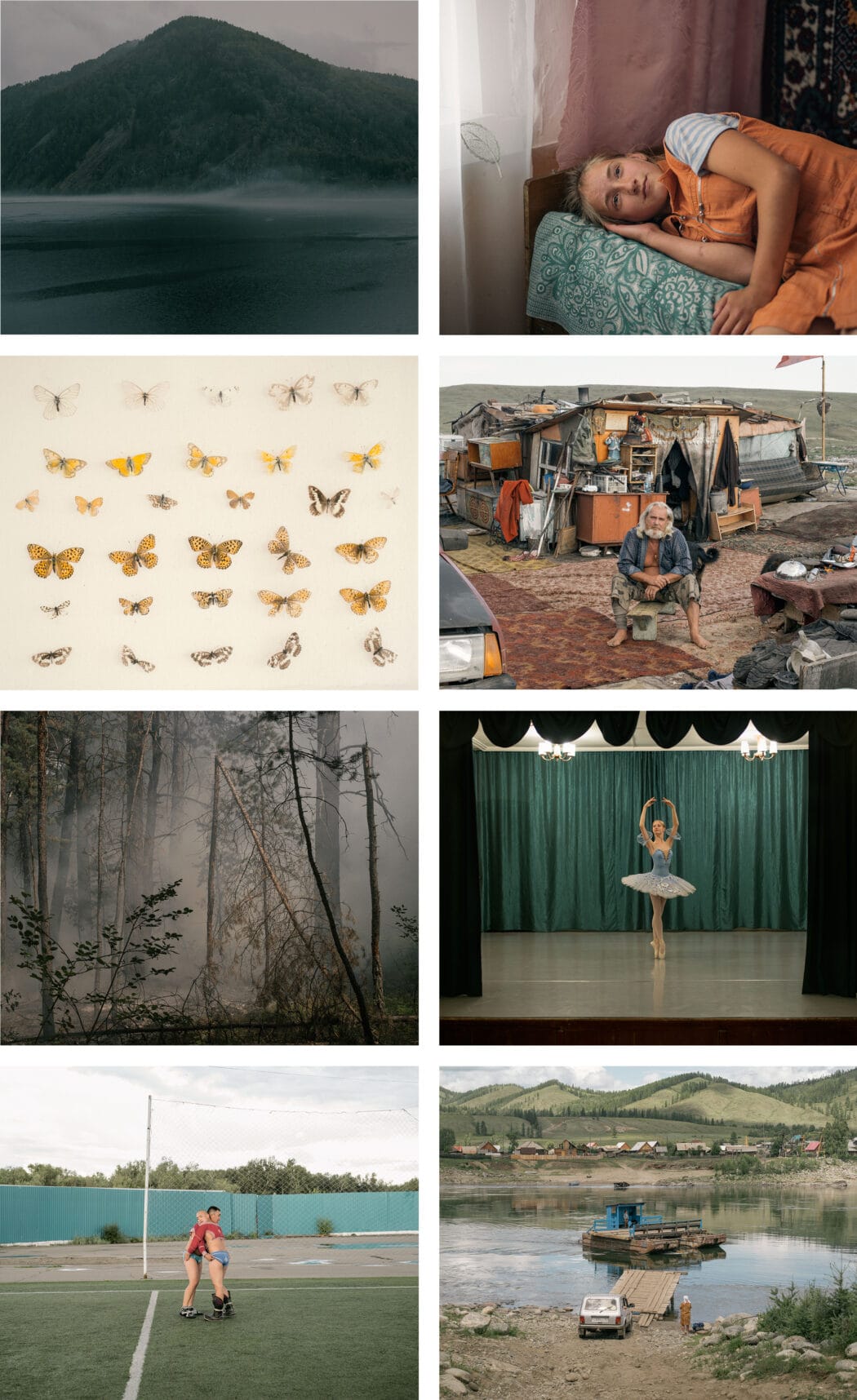 The photo series "Hiding from Baba Yaga" by Nanna Heitmann
The photo series "Hiding from Baba Yaga" by Nanna Heitmann
4. conclusion: the implementation from the idea to the finished photo project
Abschließend kann man sagen: Wenn du auf der Suche nach einer Fotoidee bist, ist es immer klug, dich von anderen Medien, Kunst und Literatur inspirieren zu lassen. Am besten suchst du nach einer Idee für ein größeres Projekt, möglichst eines mit einer gesellschaftlichen Relevanz. Mach es dabei nicht zu kompliziert, die besten Geschichten findest du manchmal direkt vor deinem Zuhause! Vielleicht gibt es jemanden in deinem Freundeskreis mit einem interessanten Hobby oder Beruf? Das eignet sich häufig für eine gute Geschichte. So kannst du leicht kreative Fotoideen finden. Danach kommt das Fotografieren selbst. Achte auf Licht und Schatten, Farbe und Bildgestaltung. Aber wichtig ist, dass du es dabei auch nicht übertreibst: Es ist zwar wichtig, dass du in deinen Fotos die Geschehnisse gut in Szene setzt. Gleichzeitig solltest du in deinen Bildern immer den realen Gegebenheiten treu bleiben und Dinge nicht übermäßig dramatisieren.
Zum Schluss musst du deine Fotos auswählen und bearbeiten. Dieser Prozess ist genauso wichtig wie das Bildermachen selbst. Denn selbst eine starke Fotografie wirkt in einer langweiligen Reihenfolge schwach. Dasselbe gilt für die Bildbearbeitung: Versuche, es nicht zu übertreiben. Die beste Bildbearbeitung ist häufig die, die man nicht als solche erkennt. Wenn du all diese Schritte befolgst, können aus deinen Fotoideen schnell ganze Fotoserien werden. Außerdem wirst du dadurch eine ganz neue Entwicklung in deiner Fotografie beobachten können. Wir wünschen dir dabei viel Spaß!
We created this post with the support of SE Ranking, as well as tools from Jasper AI and OpenAI.

